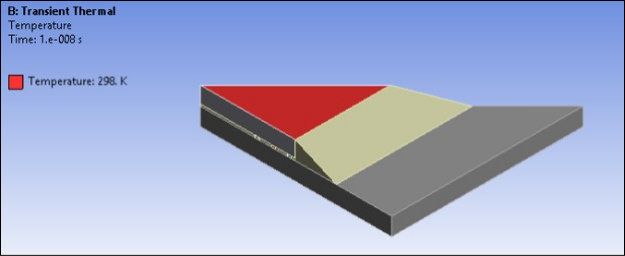Analysis of the flip chip is performed on a 1/8 section of the full model, and symmetric boundary conditions are applied to the two cut planes in both the thermal and the structural analyses.
An initial temperature of 298 K is applied on all nodes.
The temperature on the free surface of the chip is increased at a constant rate for 150 seconds to 398 K.
The same constant temperature is maintained in the next load step for 300 seconds, then cooled to 218 K in 300 seconds.
The following figure illustrates the ramped heating and cooling phases and the constant temperature maintained for 300 seconds between each phase.
The temperature profile at different time steps (obtained from a transient thermal analysis) is used in nonlinear structural analysis to predict residual creep strains in the solder. A linear variation in the older temperature between load steps is observed. Therefore, the thermal load is applied at the end of each load step rather than to each substep.
The following figure illustrates the imported body temperature applied in the structural analysis at each time step.
Rigid body motion is constrained with displacement of all degrees of freedom at the center of a substrate bottom node.





